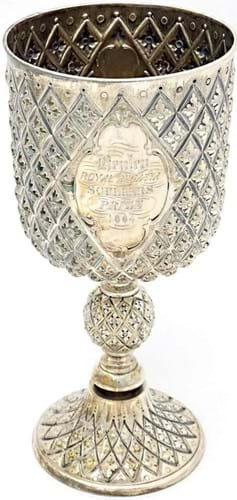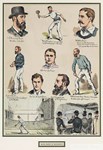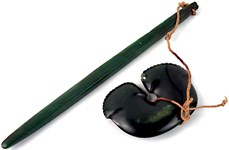The dozen lots, mainly English silver trophies and awards, related to the sporting career of British barrister Walter Bradford Woodgate (1841-1920). As well as a first-class oarsman, he was a larger-than-life character.
An alumnus of Brasenose College, Oxford, when he was a fresher he had appeared as Lady Barbara in the college play. After over-imbibing wine and four kinds of punch at dinner afterwards, he woke the next morning in time to attend chapel in his petticoats and rouge.
Always one to challenge the rules, Woodgate also wrote a small but important footnote as the man who ‘invented’ the coxless fours.
Concluding that a four could be steered using a wire and lever attached to an oarsman’s footrest, he caused controversy at Henley Royal Regatta in 1868 when he arranged for his cox to jump overboard at the start of the Stewards’ Challenge Cup. The cox was caught in weeds and struggled to make it ashore. The Brasenose boat, now considerably lighter, triumphed by 100 yards.
The outraged Henley committee disqualified the boat but a special prize for four-oared crews without coxswains was offered at the regatta in 1869.
Honours list
Woodgate rowed in the winning Boat Race crews of 1862-63, won the university pairs three times, the sculls twice, the Wingfield Sculls three times and five Silver Goblets at Henley.

Silver goblet awarded for the Diamond Challenge Sculls at Henley in 1864, £4200 at Claydon Auctioneers.
Some of the silver trophies for these victories were offered. Most sold for sums of between £1400-1700 with the goblet awarded for the Diamond Challenge Sculls at the Henley Royal Regatta in 1864 (Woodgate’s only victory in this event first run in 1844) racing away to bring £4200. Hallmarked for London 1863 and the maker Edward Ker Reid, it was appropriately worked to the foot, stem and bowl with a repousse diamond pattern.
Offered as a single lot was Woodgate’s collection of medals awarded in the 1850s-60s. Estimated at £500-1000 and sold at £5500, these were accompanied by three Victorian silver presentation oars, two embroidered silks dated 1863 and 1869 plus Woodgate’s own copy of one of several books he wrote, Reminiscences of an old Sportsman (1909).
Irvine appeal
Another popular item of rowing memorabilia emerged for sale at Mallams’ (25% buyer’s premium) Oxford Library sale on June 21: an oar used by the winning crew of the 1923 Boat Race. The 75th contest, it was won by Oxford by three-quarters of a length.
Among the eight listed in the blade manufactured by Layling and Sons was the British Olympian Guy Oliver Nickalls (1899-1974) and Andrew Comyn Irvine (1902-24), who is much better known as a mountaineer.
The following year he had taken part in the 1924 British Everest Expedition, disappearing with his climbing partner George Mallory somewhere high on the mountain’s northeast ridge. Speculation continues as to whether or not the two men had reached the summit.
Irvine’s name on the oar was doubtless part of its appeal. It took £2200.
















